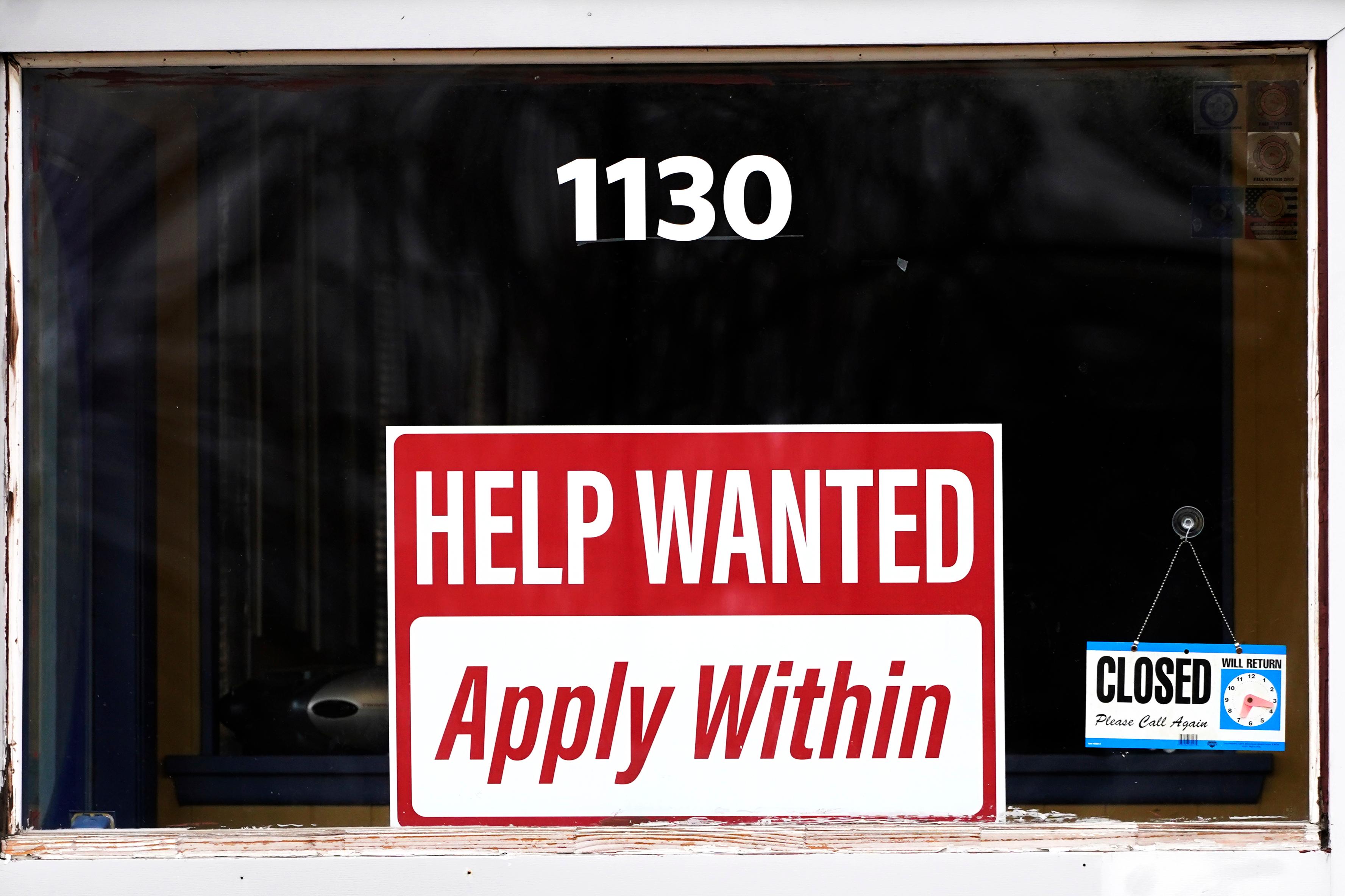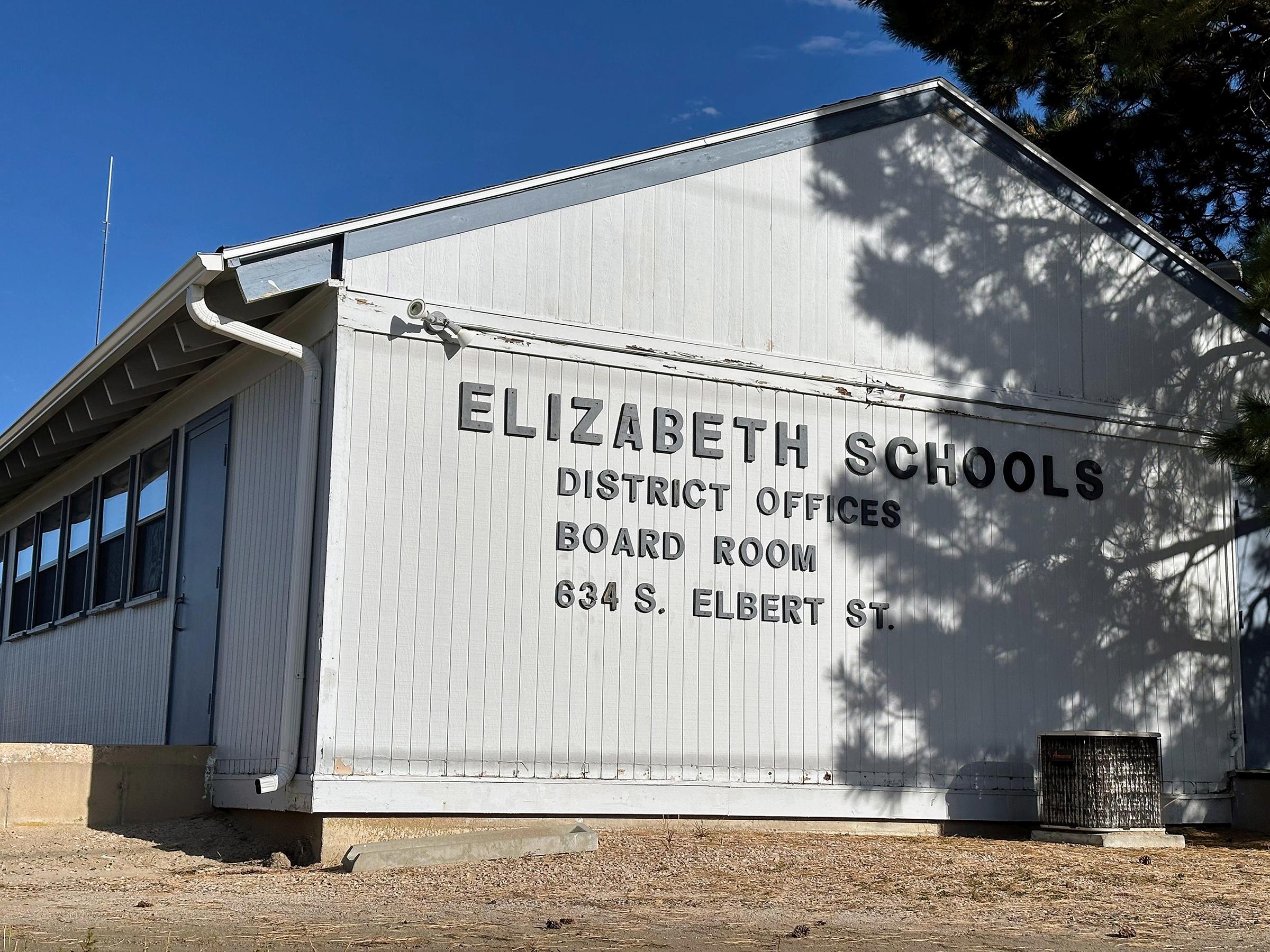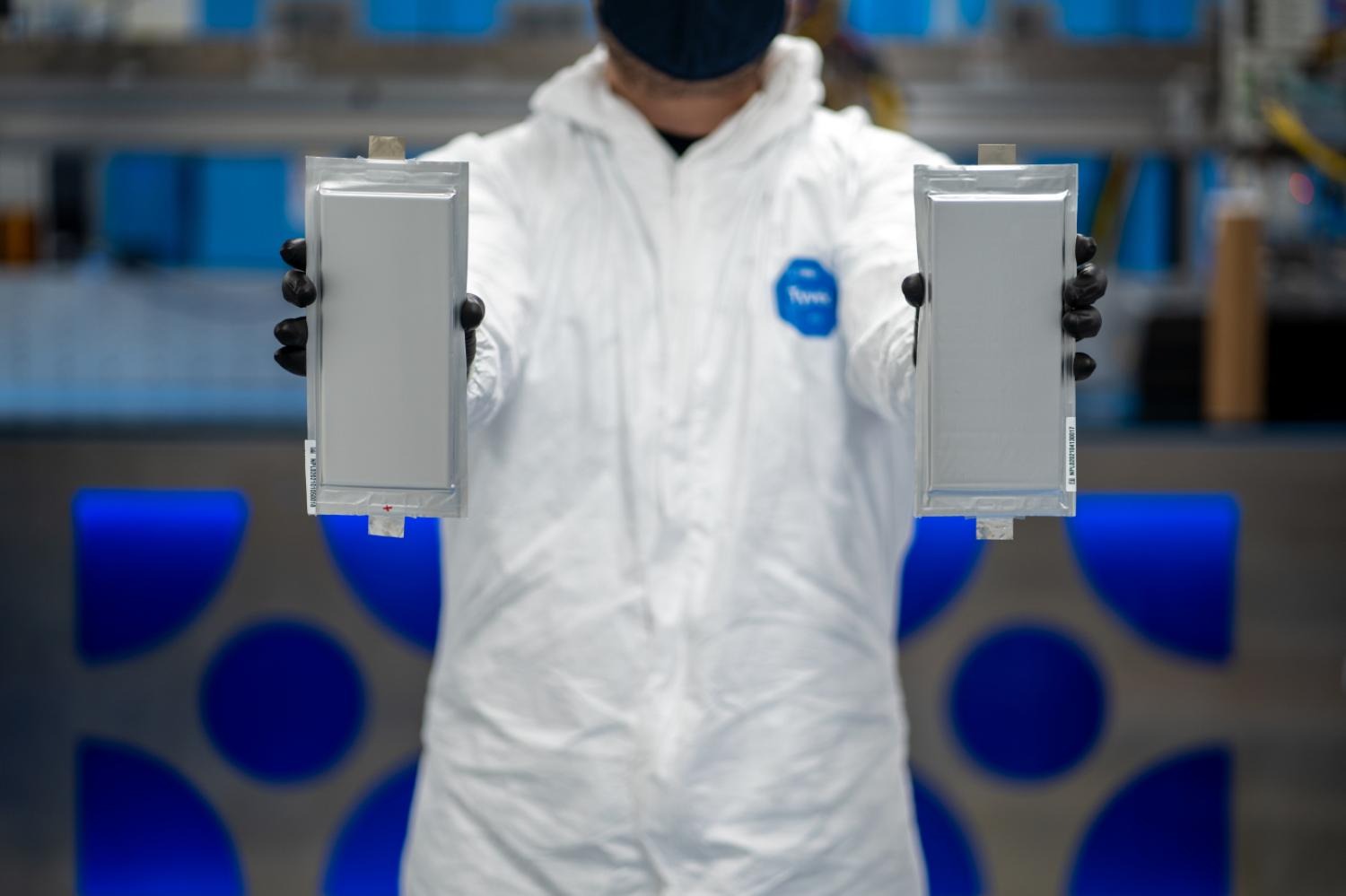
Caleb Carr’s company started in a garage when he was a student at the University of Colorado Denver.
He was 18 years old but still haunted by a tragedy three years earlier working on a search and rescue crew. A friend and mentor on the crew went into cardiac arrest. The helicopter arrived.
“They lowered a basket down to us, the basket spins out of control because of the wind coming from the helicopter ... we couldn't get it through the trees and just kept swinging back and forth,” said Carr.
His friend died. A few years later, Carr went on to study pre-med. But the swinging basket plagued him.
“A professor said, ‘Why the hell don’t you fix it?’
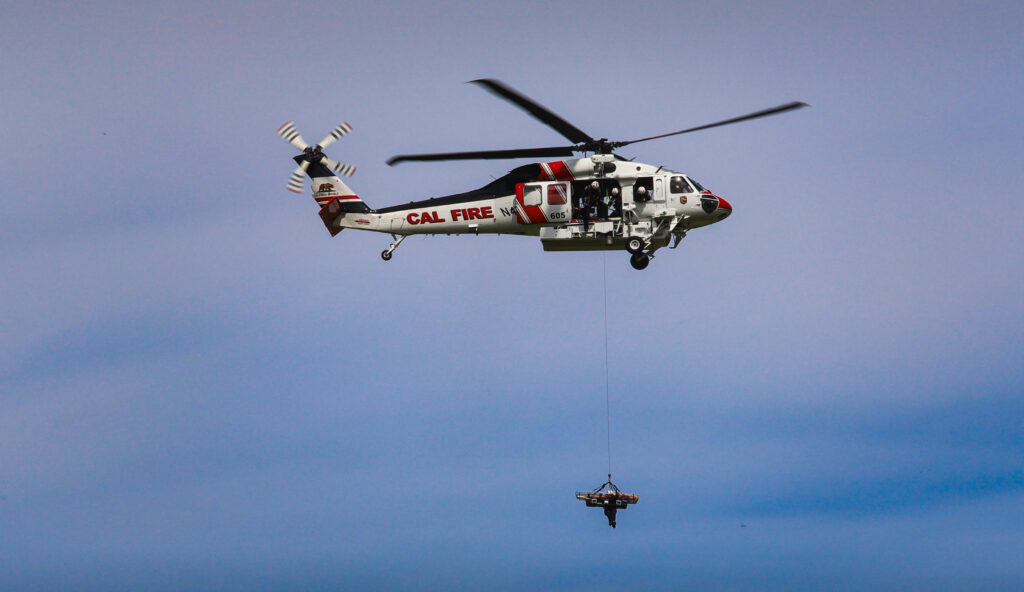
After years of working with old fans and plastic in a garage, Carr and engineering student collaborator Derek Sikora, who would later become a co-founder of a company, worked on a product to stabilize the helicopter baskets.
They eventually won the CU Climb business competition. They paid a team of CU engineering students in their senior design program to build a prototype, bringing aircraft-like thrust down to the helicopter load “navigating trees, navigating obstacles and ultimately eliminating the problem that killed my friend in 2009.”
Broomfield-based Vita Inclinata Technologies now has just under 100 employees. It also trains 90 percent of civilian search and rescue crews in the country.
Fifth in the nation
The company was one of dozens featured at a recent University of Colorado symposium designed to showcase groundbreaking research and foster networking between entrepreneurs, faculty, and alumni.
The pace of innovation and spin-off companies at the four-campus system is accelerating, particularly in the fields of health and bioscience, quantum, cybersecurity, aerospace, climate innovation, the outdoors and the food and beverage industries. The university system has 80 innovation and business accelerator programs that give patent legal, and financial support to budding entrepreneurs.
While universities nationwide are battling a declining public perception of their worth, the story of their role in technological innovation and job creation is often untold.
Between 2018 and 2022, commercialization out of the University of Colorado Boulder alone had an economic impact of $8 billion nationally and $5.2 billion in Colorado. The university ranks fifth in the nation for startup creation and 14th globally for patents issued. It’s helped propel the state to sixth in the nation for venture capital deals. Meanwhile, Nature ranked the University of Colorado Anschutz Medical Campus as one of the world’s top four institutions for innovation in 2022.
“We can drive innovation while ensuring the state's workforce is aligned with industry demands,” said Todd Saliman, president of the University of Colorado. “Our ability to build partnerships across these sectors is key to strengthening Colorado's role as a national leader in innovation.”
The scale and magnitude of innovation and startups spun out of CU universities run the gamut. There are big established aerospace companies like Ball Aerospace, Amgen focused on drug discovery or Inscripta specializing in gene editing technology. Others are in the early stages like one that works with Carbon-Storing Hempcrete, a biocomposite building material that actively sequesters carbon dioxide— or another out of CU Denver, InfraSmart Solutions, which uses AI to automate the search for sewer pipeline defects before they become crises.
I am a secret science geek. For me, that means science is hard for my brain but curiosity and wonder are off the charts. In the transcript of the audio interviews I did from the symposium — I said “Wow!” 27 times.
Here are just a few startup stories.
Nasdaq moment could help millions with autoimmune diseases
It was an exciting moment for Michael Holers, a serial entrepreneur, physician-scientist and director of faculty ventures at CU Anschutz when his company Q32 Bio went public on the Nasdaq earlier this year.
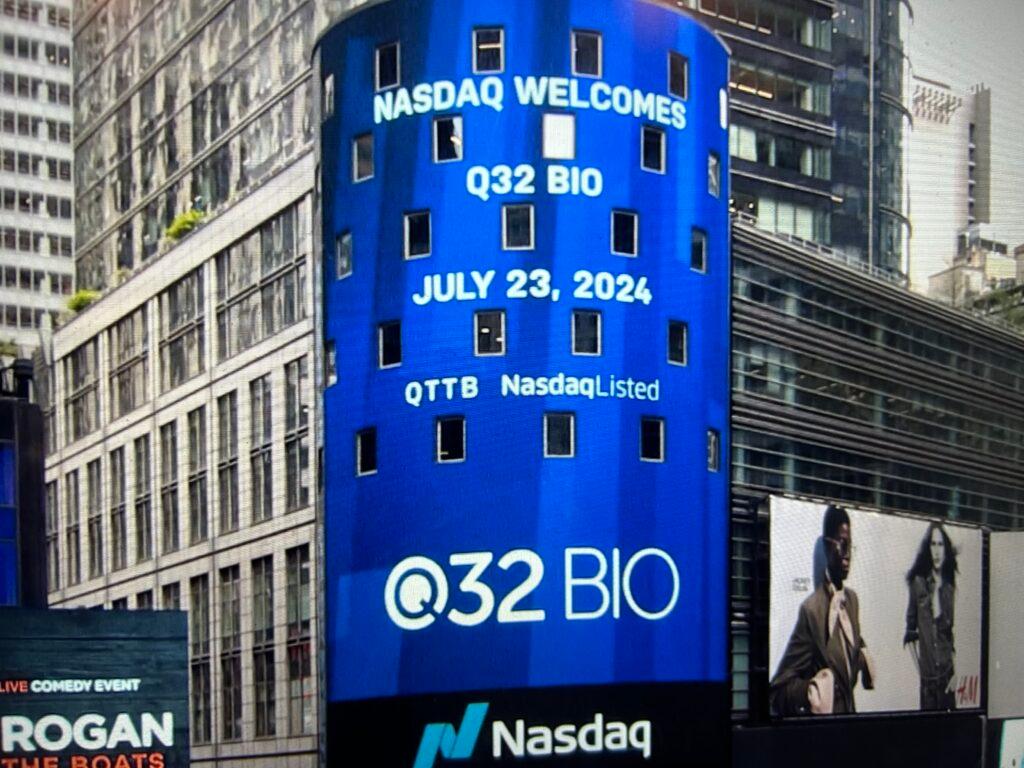
“It's a little bit wild to be standing on Times Square and looking at yourself as a 30-foot tall individual on the Nasdaq screen,” he said. But the moment was special because it meant the company could get sufficient funding to move forward with Holers’ ideas about the role of an evolutionarily ancient part of the immune system in autoimmune diseases. The CU-developed therapeutics could improve outcomes for more than 23 million Americans.
“If we're able to make this work, there are millions of individuals who have this system dysregulated and activated,” he said. “And we think with our tissue-targeted approach that we will be able to help these individuals.”
I think the coolest thing about his ideas is that they focus on a part of the immune system so evolutionarily ancient that it's found in fish, reptiles and horseshoe crabs.
I like my pasta ancient
You’ve heard of craft beers. What about craft pasta? Claudia Bouvier obtained degrees in civil engineering and engineering management. But it led to her pasta company Pastificio, which she developed with the help of Catalyze CU. Bouvier was frustrated she couldn’t find the healthy pasta she wanted for her children. So, she decided to make her own.
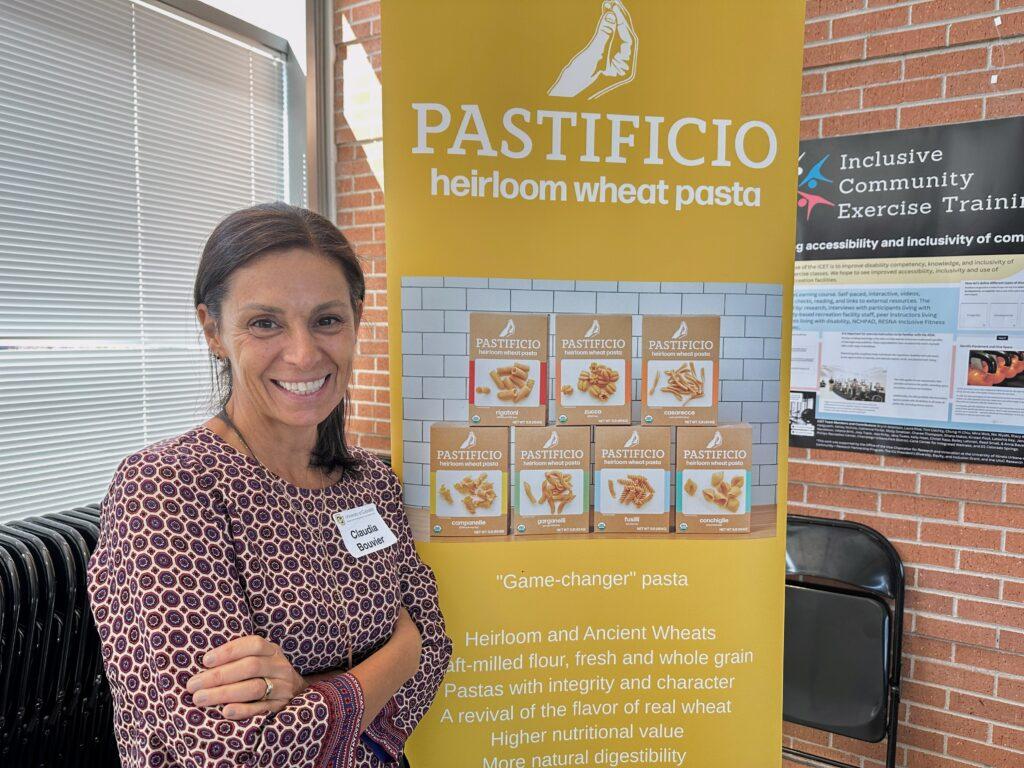
The wheat pasta is made with ancient and heirloom seeds, those that existed before the introduction of fertilizers and pesticides. “What our grandparents ate because the modern wheat, basically what is in the grocery stores, is an overly hybridized version and people can no longer digest it, so we are going back to old varieties.”
The company works with seed banks in Boulder and farmers in the San Luis Valley to produce pasta that is more environmentally friendly, with deeper character, more interesting flavors, and higher nutritional value, said Bouvier. The pasta is sold in grocery stores in Colorado and California.
Bouvier sends me home with a sample box. I promise to think of my grandmother when I eat it.
How can AI help you find the right health supplement drink?
When Khushang Hirpara was a student at CU Boulder, he started a club with about 250 athletes.
“The No. 1 question I would get from all these athletes and my parents was ‘Kushang, what supplements should I take?’ And my answer was, ‘How am I supposed to know? I can’t read 200 studies at the same time.’”
Then he thought why not use his expertise in artificial intelligence to create advanced algorithms to analyze a person’s health goals, lifestyle and biometrics. It led to 28 million possible supplement combinations. His AI model eliminates inaccuracies found in many of AI’s natural language processing models. Hirpara uses a technique to make more accurate predictions using entirely open-source models.
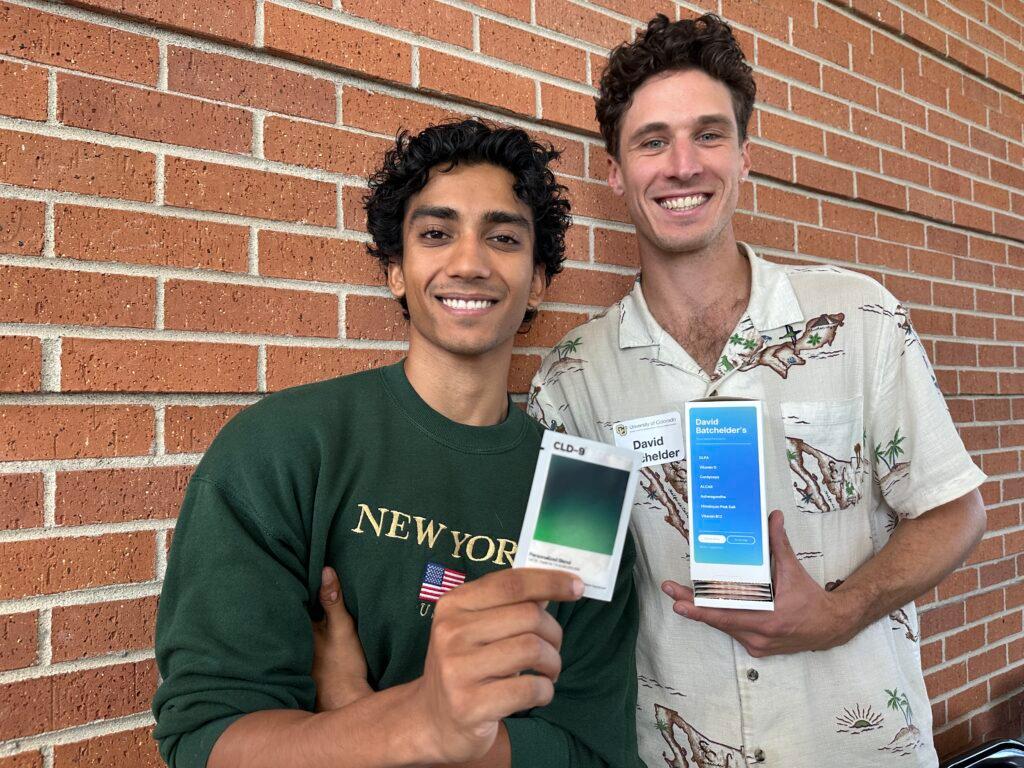
Here’s how it works: You have a 5-minute chat with an AI bot. Then it designs a supplement mix specifically built for you out of the 28 million possible combinations. A box from the company CLD-9 — get it, Cloud 9? — will arrive at your house each month. Mix with water and voilà.
“We’re the only company in the world that will build a custom formula specifically for you down to the dosage based on your biometrics,” he said.
And get this — your name is even printed on the box.
I am the type to grab a carrot on the run. But daily health drinks are a massive market that Hirpara tells me exploded after the pandemic.
Lithium batteries watch out. Sodium’s just around the corner.
You’ve heard of lithium-ion batteries used in cell phones, electric vehicles and solar panels. But have you heard about the disadvantages that they’re heavy, have a limited life span and contain toxic chemicals?
Enter Mana Battery Inc. (website will go live Oct. 17), a CU Boulder spinout. It has produced a sodium-based battery cell to replace lithium-ion batteries. Co-founder Nick Singstock said sodium is a much cheaper and more sustainable material.
“We are able to get the same performance as lithium-ion, but at half the cost and a much safer solution,” he said. They’ve also developed a ‘secret sauce’ (electrolytes) tailored to work with sodium batteries to sell directly to cell manufacturers.
The company won startup funding grants in last year’s Lab Venture Challenge to develop a large battery cell. Co-founder and alum Tyler Evans, who a decade ago spun out a battery company that was later bought by Tesla, is back for this project. Many of his mentors back then came from Solid Power, another Boulder spinout.
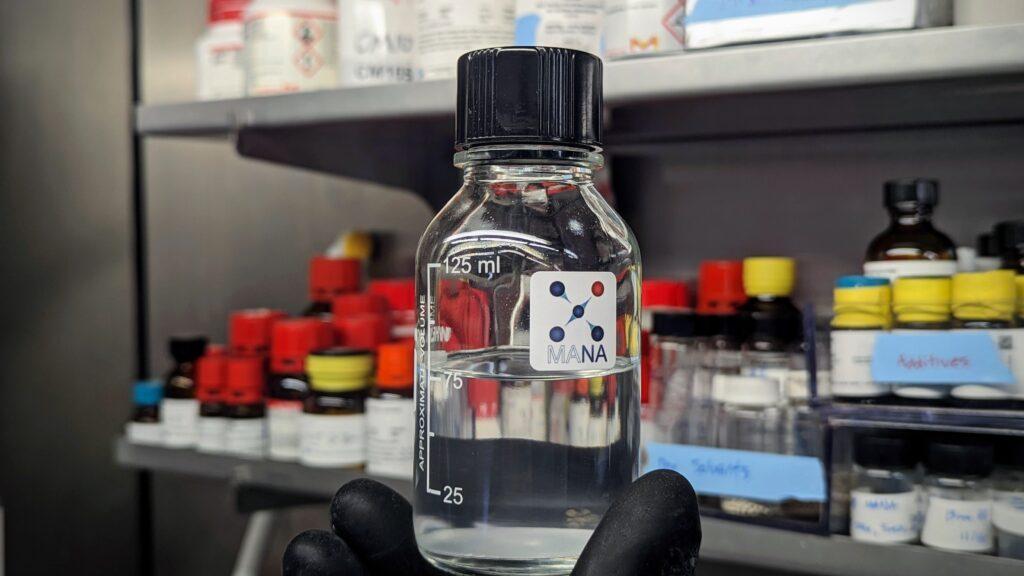
“They're still mentors today,” he said. “The Front Range has cultivated a very fertile environment for collaborative efforts and entrepreneurship. It’s a good place to start a company.”
Mana’s name has interesting roots. You may recognize the Na from high school chemistry – sodium.
“It's also a Polynesian word that means the elemental forces of nature embodied in an object and for us that really sounded like a more sustainable battery solution,” said Singstock.
Manufacturing at 100 times the speed of a 3D printing
You thought 3D printing was hot? Camila Uzcategui has co-founded a company Vitro3D that’s developed a new way to make 3D objects.
“We like to say that it's the flexibility of 3D printing with the speed of injection molding,” she said. “That’s why I like to compare it to the ‘Star Trek’ replicator in real life.”
That’s something I thought I wouldn’t see in my lifetime. Check out this video showing how it uses lasers and light to turn liquid into a solid at 100 times the speed of 3D printing.
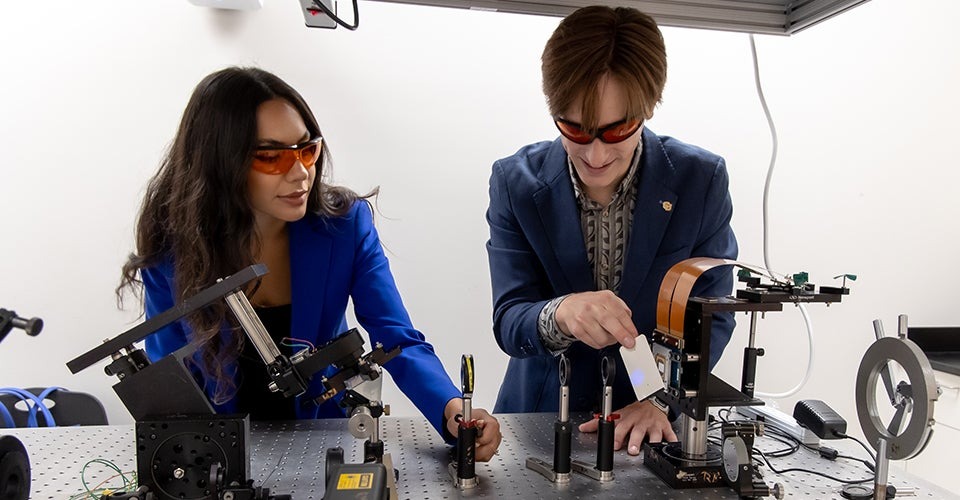
Imagine dental aligners that could be manufactured right while you wait right at the dentist’s office. The technology has the potential for rapidly producing connectors in electronics or making synthetic organs. Instead of relying on manufacturing abroad for parts, it could happen right on a company’s site. Uzcategui's dissertation in materials science and engineering could help to revolutionize manufacturing.
The PhD connected her and her co-founder to CU’s technology transfer office to get a patent. That led to entrepreneurship classes where they learned how to conduct customer discovery interviews to understand the biggest needs for their technology.
“We didn't want to let our technology just sit in a scientific publication or in a patent. We wanted to see it come to the real world and impact actual people's lives.”
Windows that go from light to dark with the click of a button
Reversible Metal Electrodeposition. I hadn’t heard of it either. But it’s what’s behind an energy-efficient window technology being developed by Tynt Technologies, a CU Boulder-based startup. The product scraps the need for shades or blinds. Instead, with the touch of a button, users can fully control the light and solar heat entering a home. In the clear state, the window lets the sun in. In the opaque state, it blacks out the sun, reflecting unwanted energy back out.
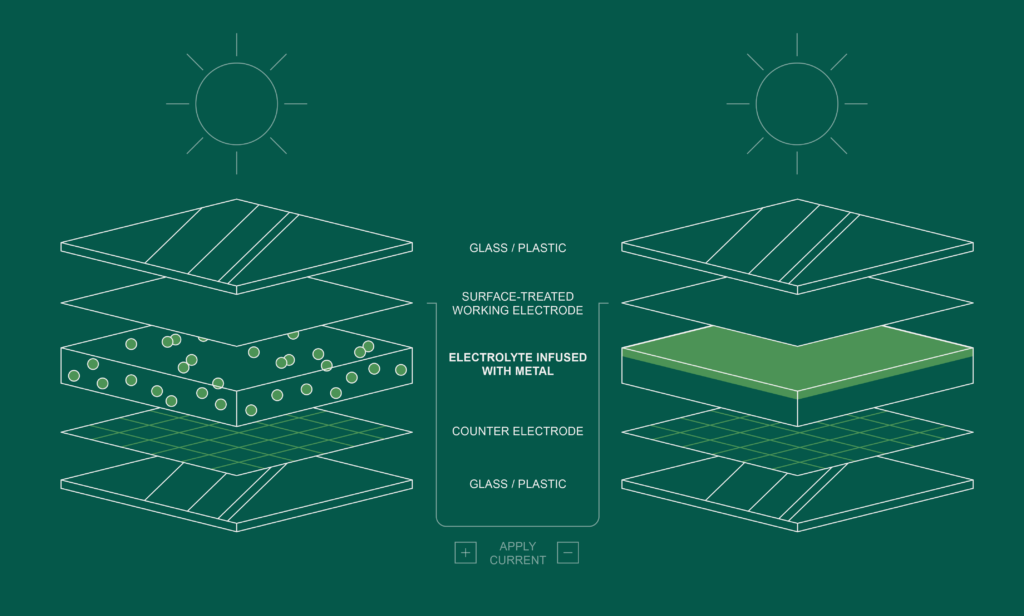
“One of the benefits is when you make it go black, you're plating a metal film, which can then reflect light and heat and provide your home a lot of energy savings in addition to being aesthetically pleasing,” said research scientist Tawney Knecht.
Windows typically last from 20 to 30 years so the challenge now is making a product that is durable for that long. Tynt has about 20 employees with a goal to have a product by the end of the year. Co-founder Tyler Hernandez has raised more than $16 million and was named to Forbes’ 30 Under 30 for Energy in 2023.
When you can’t find shea butter you like, you make your own
As a woman of color, Laura Moore said she had a challenge. She liked to use shea butter on her skin, a seed fat from the shea tree found in parts of Africa. It works as an emollient, softening, smoothing and sometimes repairing skin. However, access to good products is limited in Colorado.
“Once a year I would travel across the United States and try to haul it home,” she said. Sometimes the natural texture was too dense.
“I kind of got a little frustrated, wanting to solve my own problem. Did a lot of research on some natural skin products and formulated my own recipe that has taken off.”
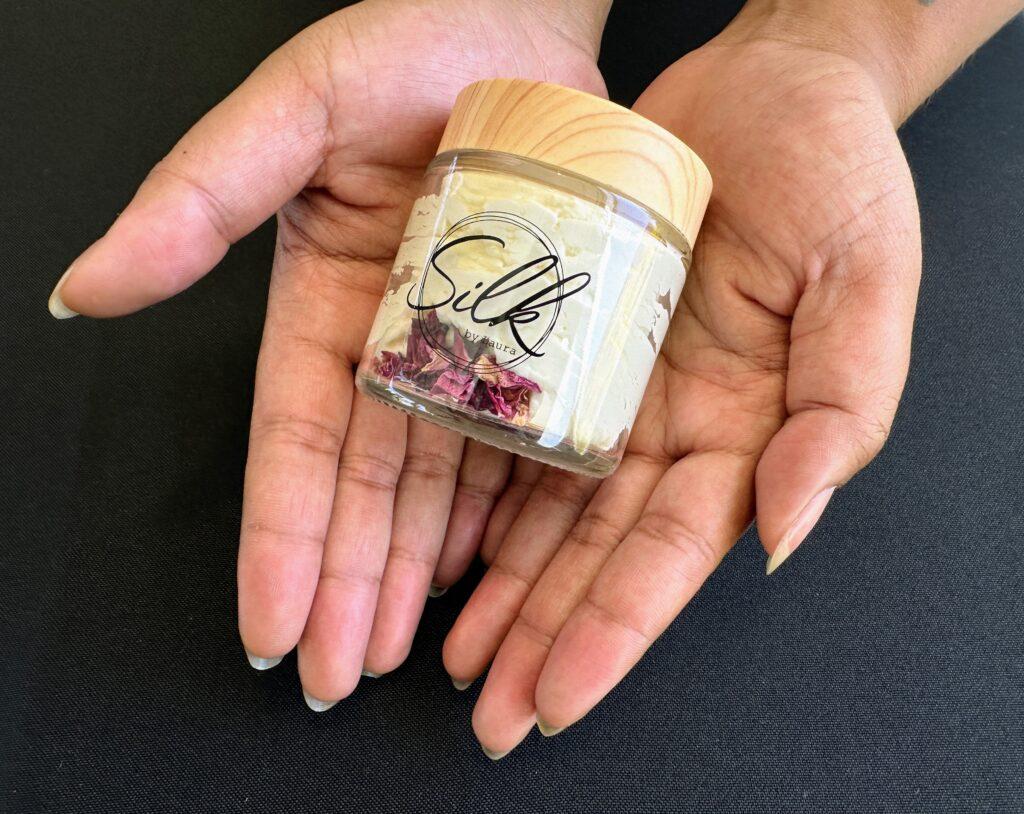
She was lucky too. The CU alum worked at the Leeds School of Business where she’d pick up tidbits here and there about innovation about starting a company. Moore eventually went through CU Boulder’s Catalyze CU accelerator, a summer program designed for ventures created by the university’s students, faculty and staff.
Right now, Silk by Laura is a one-woman show making all-natural and homemade whipped shea butter.
“I hand-make it myself. I have my own little office. I ship it out myself. I do my own marketing ... People use it for everything from psoriasis, eczema to a moisturizer ... everything.”
The first luxury Ethiopian coffee
Aside from the sodium batteries, this was my favorite company because Faven Assefa is just 21 years old. She studies and works full-time on her business startup because she’s passionate about this piece of her culture: the traditional Ethiopian coffee ceremony.
“Coffee originated in Ethiopia, and that's not a piece of information most individuals are aware of,” she said, offering up cups of coffee to symposium attendees.
Assefa said Luxe Coffee is the first luxury Ethiopian coffee brand. She’s currently in contract negotiations with some five-star establishments. For consumers, the coffee comes in a luxury box as a biodegradable subscription model.
“It’s a piece of Ethiopia in everyone’s home, that’s what I like to say.”
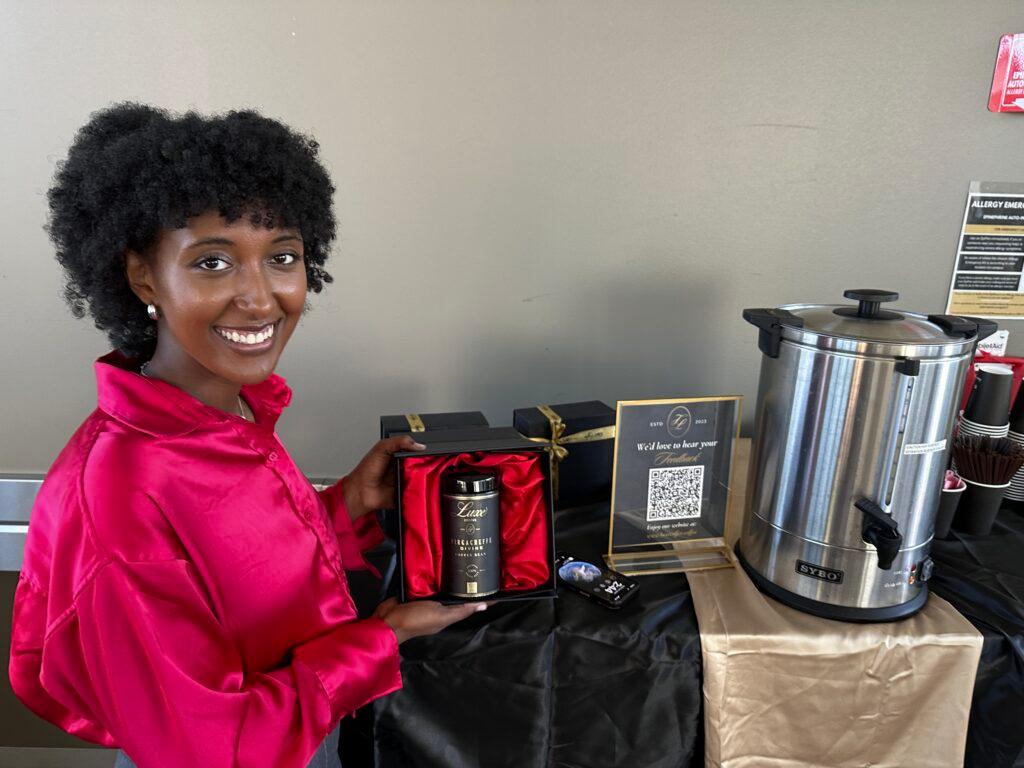
In her first entrepreneur class at CU Denver, Assefa got her most important piece of advice.
“Traction, traction, traction.”
It’s what investors look at. It’s on your cash flow statements, your balance sheets, everything. So, Assefa got the word out about Luxe Coffee everywhere she went.
“As far as everyone in my community, yes, I never shut up about it,” she laughs.
She gives me some advice (that I’m still working on) when I ask how on Earth she does it all.
“It’s just a lot of time management,” she counsels. “Manage your time effectively.” A good cup of coffee on the side doesn’t hurt.

